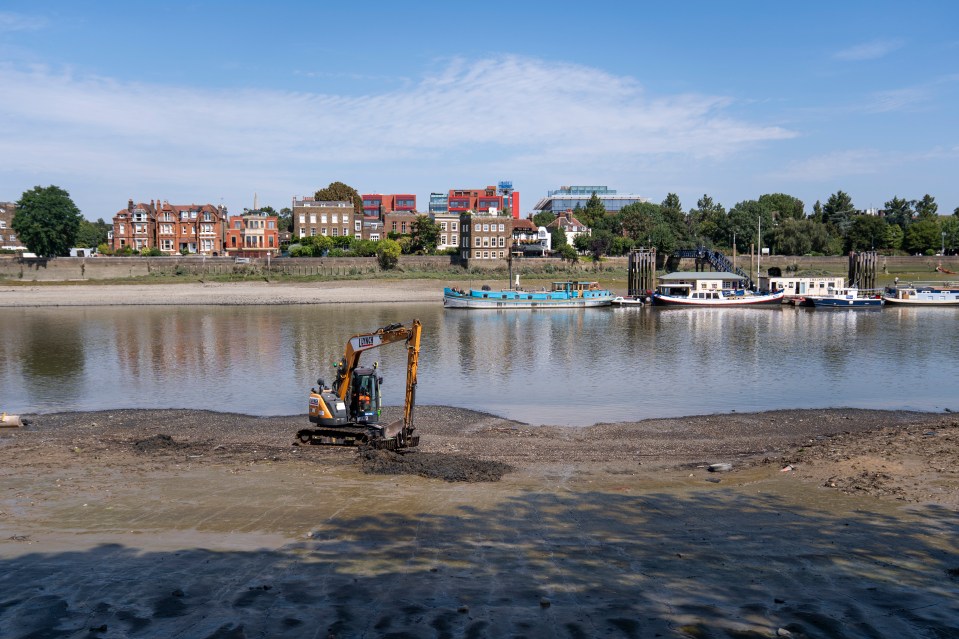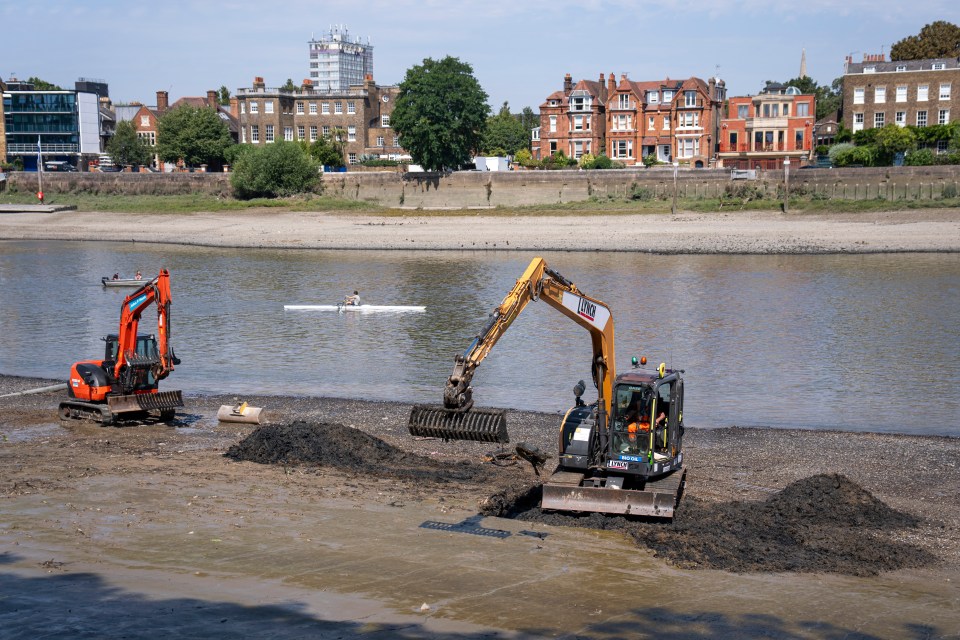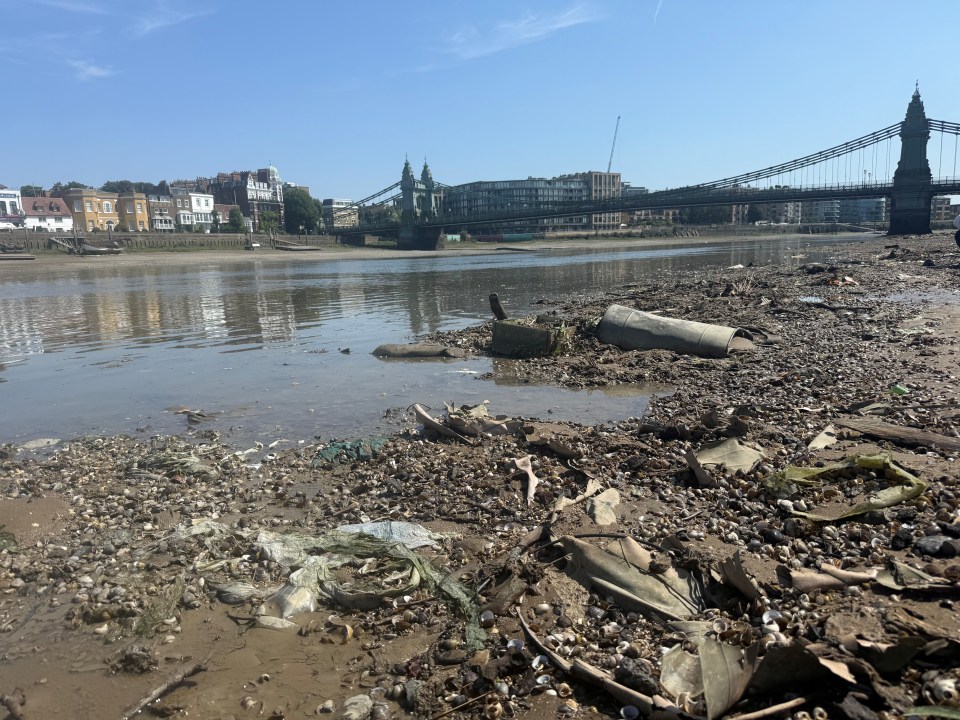AN ENORMOUS pile of rubbish named ‘wet wipe’ island has begun to form along a UK river.
The 180-tonne lump of filth, which is the size of a five-a-side football pitch, is damaging wildlife and creating a huge eyesore.
Located by Hammersmith Bridge in West London, the mound of garbage began to form a number of years ago, and now covers a 250-metre stretch of the River Thames.
And the heap has become to infamous that it has now even been listed ongoogle.com/maps/place/Wet+Wipe+Island/@51.4890909,-0.2373108,17z/data=!3m1!4b1!4m6!3m5!1s0x48760f001eca02d3:0xad7d08d44de9380f!8m2!3d51.4890909!4d-0.2347412!16s%2Fg%2F11yhr7cssp?entry=ttu&g_ep=EgoyMDI1MDgxMy4wIKXMDSoASAFQAw%3D%3D” rel=”nofollow”> Google Maps as a cultural landmark.
Thankfully, the gargantuan mass is soon to be removed, thanks to a clean up operation from the Port of London Authority and Thames Water.
It is expected to take a month to complete, with wet wipes and other pollutants removed in skips for safe disposal.
Concerned volunteers have been monitoring the trash island since 2017, and have tried to clean up the mess by hand.
Over the past eight years they have removed over 140,000 wet wipes that have been flushed in to the river, but still the lump of rubbish continues to grow.
Locals have raised concerns about the impact the rubbish heap has on aquatic life and water quality, with sewage pollution leading to E-Coli in the water.
“Frankly it is disgusting”, Mark Anderson, the PLA’s head of corporate affairs, told The Telegraph.
“We are just as frustrated as anybody, and have wanted to see this addressed for years.”
One resident, expressing concern over the wet wipe mound told The Guardian: “To be honest, it makes me emotional and frustrated that people are actually flushing their wet wipes instead of disposing of them correctly.
“It’s slightly embarrassing.”
Thames Water clears a whopping £3.8 billion wipes from its network each year, which costs £18 million.
Wet wipes should never be put down the toilet, and should instead be disposed of in bins.
Thames Water has come under fire for its handling of water pollution, with 33 ‘serious pollution incidents’ caused by the water company in 2024.
Environment Secretary Steve Reed called the figures “disgraceful” and a “stark reminder” of how underinvestment and weak regulation had led to record sewage pollution.
What is wrong with flushing wet wipes?
UNLIKE standard toilet paper, wet wipes do not dissolve, and contain materials which do not disintegrate like paper-based tissue.
Wet wipes can congeal down the toilet, causing blockages that lead to build-ups of fat – known as fatbergs.
This can also lead to materials like plastics being released into the environment, which could have consequences for the human food chain.
Plastics in the wipes can also be eaten by whales and tiny plankton – and has been found in mussels set for human consumption.
However, it has vowed to invest £9.5 billion in the next five years on improving river health and protecting the environment.
The government is also set to ban wet wipes containing plastic to help tackle this problem.















